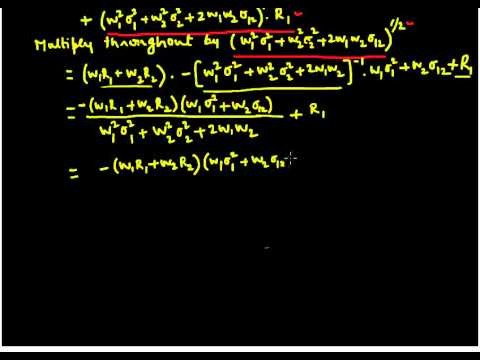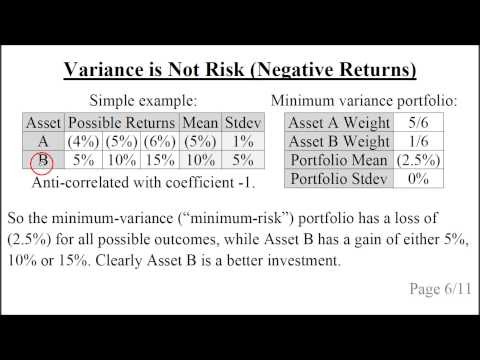Dedicated portfolio theory Wikipedia the free encyclopedia
Post on: 2 Июнь, 2015 No Comment

Contents
History [ edit ]
The most prolific author on dedicated portfolio theory, Martin L. Leibowitz. [ 8 ] was the first to refer to dedicated portfolios as “cash matching” portfolios. He demonstrated how they are the simplest case of the technique known as bond portfolio immunization. In his sketch of its history, he traces the origin of immunization to Frederick R. Macaulay [ 9 ] who first suggested the notion of “duration” for fixed income securities in 1938. Duration represents the average life of the coupon payments and redemption of a bond and links changes in interest rates to the volatility of a bond’s value. One year later, J.R. Hicks [ 10 ] independently developed a similar formulation referred to as the “average period.” In 1942, T.C. Koopmans [ 11 ] pointed out in a report that, by matching the duration of the bonds held in a portfolio to the duration of liabilities those bonds would fund, the effects of interest rate changes could be mitigated or nullified completely, i.e. immunized. In 1945, Paul Samuelson [ 12 ] formulated essentially the same concept, calling it the “weighted-average time period.” None of these earliest researchers cited each other’s work, suggesting each developed the concept independently. The work culminated in a 1952 paper by a non-academic actuary, F. M. Redington. [ 13 ] who worked for a British insurance company.
This body of work was largely ignored until 1971, when Center for Research in Security Prices (Lawrence Fisher and Roman Weil ) [ 14 ] re-introduced immunization to the academic community in a journal article that followed a 1969 report written for the Center for Research in Securities Prices. Shortly thereafter, in 1972, I.T. Vanderhoof [ 15 ] presented the concept to the American actuarial community. Academic papers on immunization, duration, and dedication began to appear in increasing numbers, as interest rates began to rise. As rates rose further and further above their long term averages, the financial investment industry began to pay attention, and their inquiries increasingly attracted the attention of academic researchers. Realizing that the high rates would allow them to lock in unprecedented rates of return, defined-benefit pension fund managers embraced the concepts. Goldman Sachs and other high level firms began to produce software to help bond portfolio managers apply the theory to their institutional sized portfolios. Most of the examples used in the literature typically utilized portfolios consisting of several hundred million dollars. In 1981, Leibowitz and Weinberger [ 16 ] published a report on “contingent immunization” discussing the blending of active management of bond portfolios with immunization to provide a floor on returns. Leibowitz [ 17 ] also published a paper in two parts defining dedicated portfolios in 1986. One of the side benefits of the theoretical work and practical interest was the development of new fixed income instruments, such as zero-coupon bonds. The most recent book on the topic, based on a research project at the University of San Francisco in the late 1990s, is titled Asset Dedication by Huxley and Burns. It was published in 2005, [ 18 ] describing the strategy and how the advances in desktop computers have reduced the cost of constructing dedicated portfolios to levels where individual investors could use the concept for personal investing, such as the example below shows for a retirement portfolio.

Example of a dedicated portfolio [ edit ]
While most of the original work on dedicated portfolios was done for large institutional investors such as pension funds, the most recent applications have been in personal investing. This example is a couple who wants to retire this year (call it 20XY, such as 2013) and has already set aside cash to cover their expenses. Social security will supply some income, but the rest will have to come from their portfolio. They have accumulated a retirement portfolio worth $2,000,000 in addition to this year’s expenses. Typically, retirement portfolios have a higher percentage of bonds in their portfolio than portfolios owned by younger people who are not yet approaching retirement. Probably the most common retirement portfolio would be a 60/40 stock/bond allocation compared to an 80/20 or 90/10 stock/bond allocation for younger investors. Following a common rule of thumb for retirement withdrawal rates to make a retirement portfolio last at least 30 years, they should withdraw no more than 5 percent from their portfolio next year ($100,000). They can increase it each year by the amount of the previous year’s inflation. To be conservative, they will plan for an annual inflation rate of 3 percent (they may not spend it, but want the protection just in case). Table 1, [ note 1 ] lists the projected stream of withdrawals. These withdrawals represent the yearly “income” the couple needs for living expenses over their first eight years of retirement. Note that the total cash flow needed over the entire eight years sums to $889,234.














